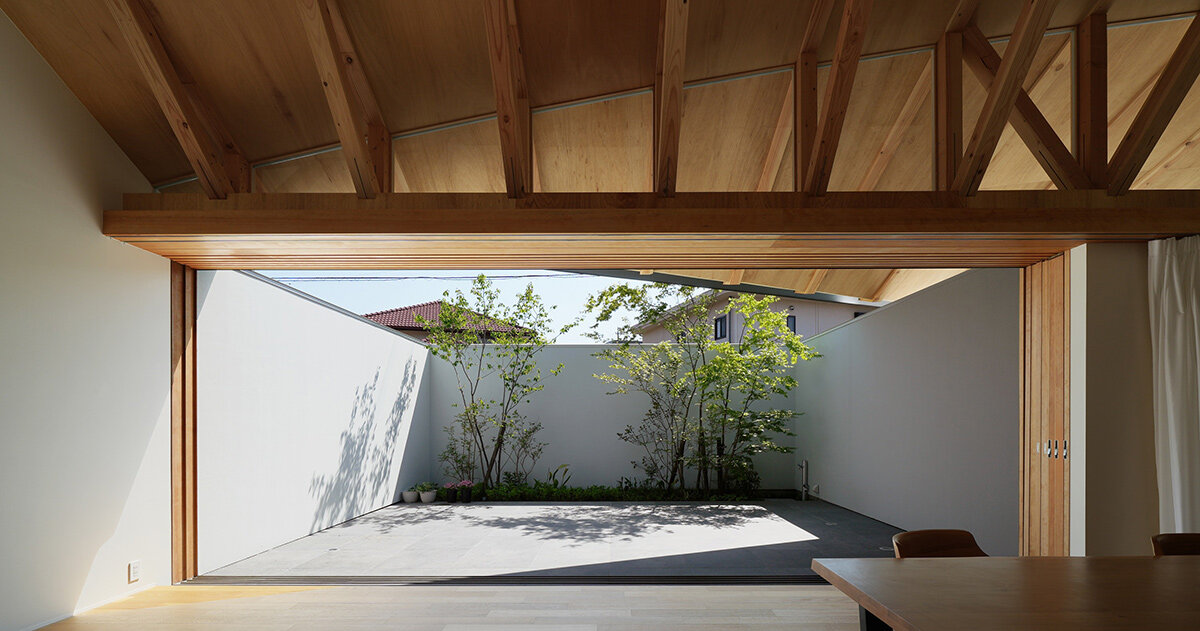a home for both Privacy and Openness
The Midorigaoka House, designed by Tatsuya Kawamoto + Associates, is located in a residential neighborhood in Aichi, Japan. Conceived as a place where residents can breathe fresh air and move comfortably between interior and exterior spaces, the house responds directly to the density of its suburban setting through measured openness and carefully modulated enclosure.
Rather than raising the main living spaces to a second floor to shield them from neighboring views, the architects chose to root the home at ground level, establishing a strong connection to the earth and the surrounding garden. By adjusting the length and shape of the eaves, they addressed concerns of privacy and solar exposure while preserving the openness of a first-floor plan. The geometry of the roof shifts in response to adjacent buildings, giving the structure a dynamic silhouette.
images © Takashi Uemura
Tatsuya Kawamoto + Associates’s rhythmic structure
Inside the Midorigaoka House, the team at Tatsuya Kawamoto + Associates frames the living area with a series of angled braces that shape both the form and spatial rhythm of the interior. These braces support wide cantilevers—such as the 5.2-meter beam at the approach and a more modest 0.8-meter projection at the courtyard — while creating a sense of movement within the structure. Their equally spaced but differently angled arrangement gives the house its distinctive tectonic language.
At the heart of the project is a 6.1-meter-long sash window that opens completely to the courtyard. When retracted, this element transforms the living room into an open-air pavilion, fluidly opening outward onto the outdoor terrace. Overhead, the sloped roof and double-height void allow light and air to filter through all levels of the home, reinforcing the sense of continuity that guides the experience of the space.
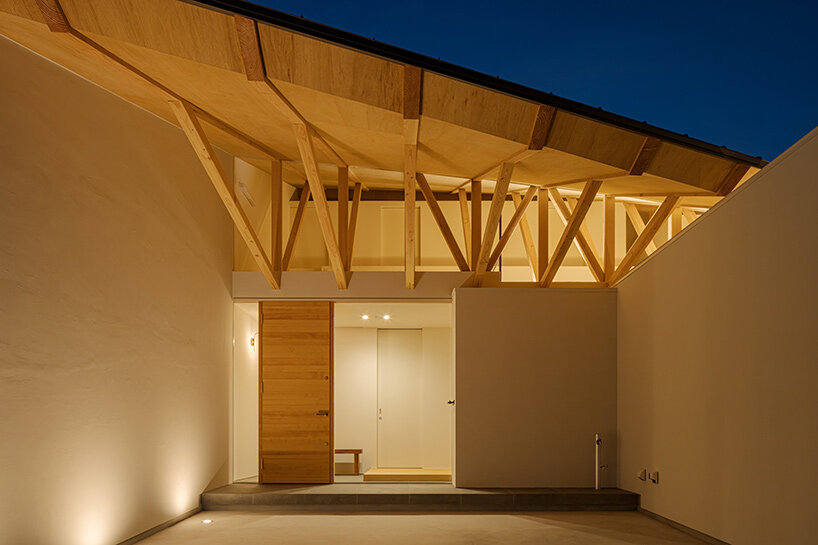
the Midorigaoka House is located in a residential neighborhood in Aichi, Japan
the adaptable interiors of the midorigaoka house
Throughout the Midorigaoka House, Tatsuya Kawamoto + Associates’s tectonic clarity supports a complex interior atmosphere. The roof’s changing angles are a direct response to structural needs, yet they introduce complexity that animates the interior and frames varied views outward. Each zone under the eaves has been calibrated for its function, whether to invite sunlight, shelter an approach, or extend a living area outward.
As vegetation matures around the site, the garden will gradually grow in toward the home’s threshold. The architecture anticipates this transformation, using variable eave lengths and cantilevered beams to support layered spaces beneath the roof that blur the threshold between inside and outside.
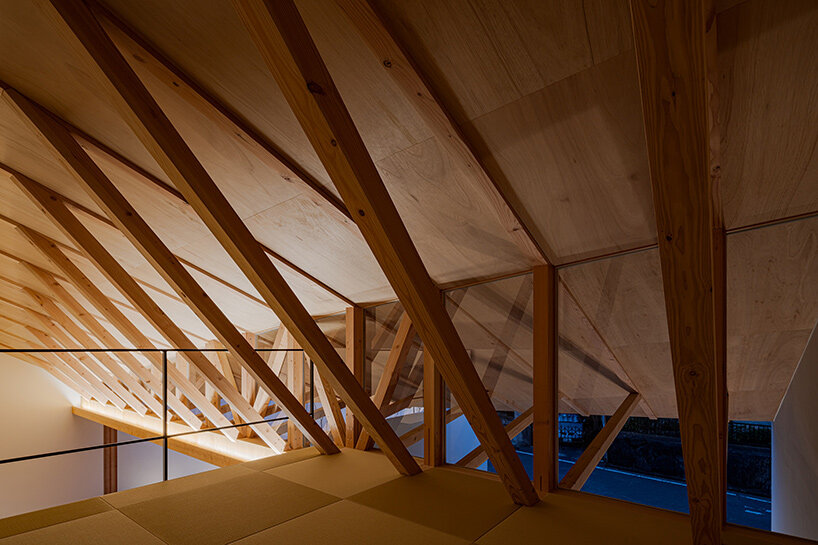
double-height spaces and sloped roofs allow upper floors to feel connected to the garden
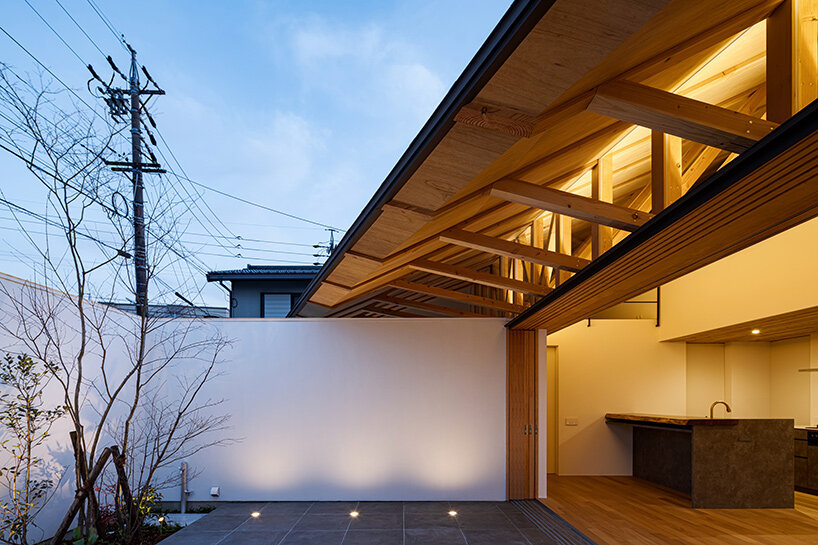
the home maximizes connection to the outdoors while maintaining privacy
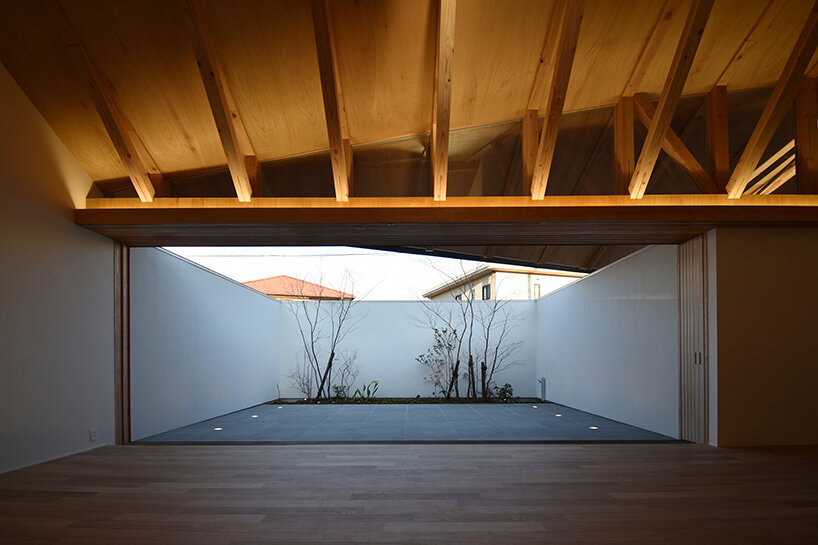
the main living spaces remain at ground level
